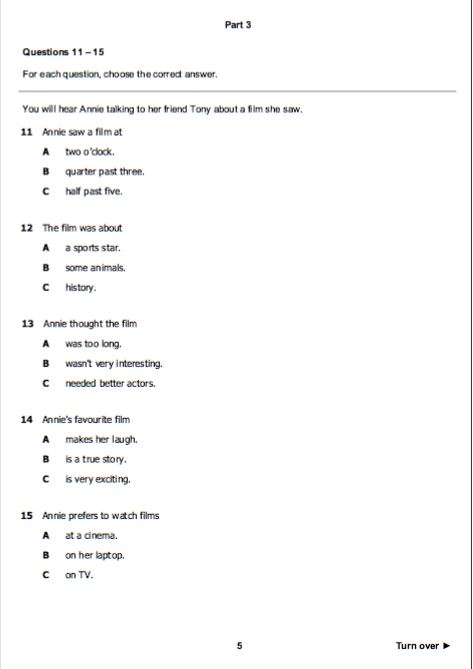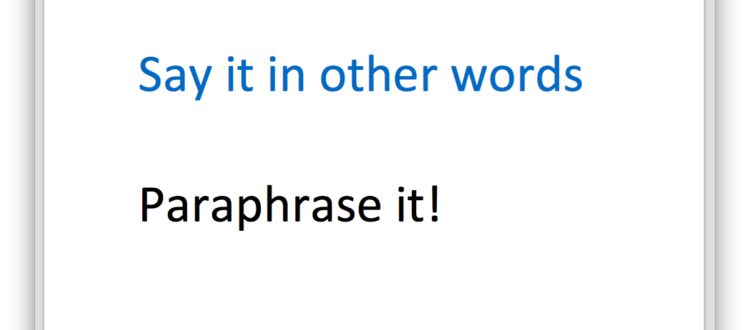Recognising paraphrasing in A2 Key (for Schools) Listening Part 3
The ability to recognise paraphrasing is a key element in performing well in A2 Key Listening Tests.
Developing this ability is key to success in both Listening and Reading Tests at all levels, and, in fact, in learning a language.
As well as learning individual words – which can often also be paraphrased (like bike – bicycle, television – TV, for example) – as we become more proficient in a language, we can express ourselves in more simple or complex language, informally or formally, in more creative and figurative ways, etc.
Let’s look at how we could help students develop their skills of recognising paraphrasing by examining an A2 Key for Schools Listening Part 3 task, taken from the A2 Key for Schools Handbook, available to download here: https://www.cambridgeenglish.org/teaching-english/resources-for-teachers/
1 Select an A2 Key Listening Part 3 task, for example, the task from the A2 Key for Schools Sample Paper.

2 Select 5 or 6 phrases from the questions and paraphrases from the tapescript.
3 Show students the phrases from the questions. They listen to the conversation and write down the paraphrasing that they hear on the audio.
| In the questions | On the audio |
| quarter past three | |
| a sports star | |
| needed better actors | |
| a true story | |
| prefers | |
| at a cinema |
* Let students listen as many times as they need to write down all the words.
4 Feedback on the paraphrasing.
Key
| In the questions | On the audio |
| quarter past three | three fifteen |
| a sports star | a top basketball player |
| needed better actors | it’s a shame there are no really good actors in it |
| a true story | it all really happened |
| prefers | I think it’s best |
| at a cinema | on a big cinema screen |
5 Focus on any pronunciation features/issues that arise. In this example, a useful phrase to focus on for pronunciation practice would be:
I think it’s best to see films on a big cinema screen.
Backchaining
Start from the end of the phrase: cinema screen. Drill the ‘s’ starts with students. Quite challenging for L1 Spanish students! (The students I usually teach.)
Then, focus on best to see, pointing out how we don’t say both ‘t’s’ at the end of best and the start of to and saying the three words quite fast.
Then, gradually build up to the whole long phrase.
As usual, I hope these ideas are useful and give you and your students some inspiration for their learning of English!

